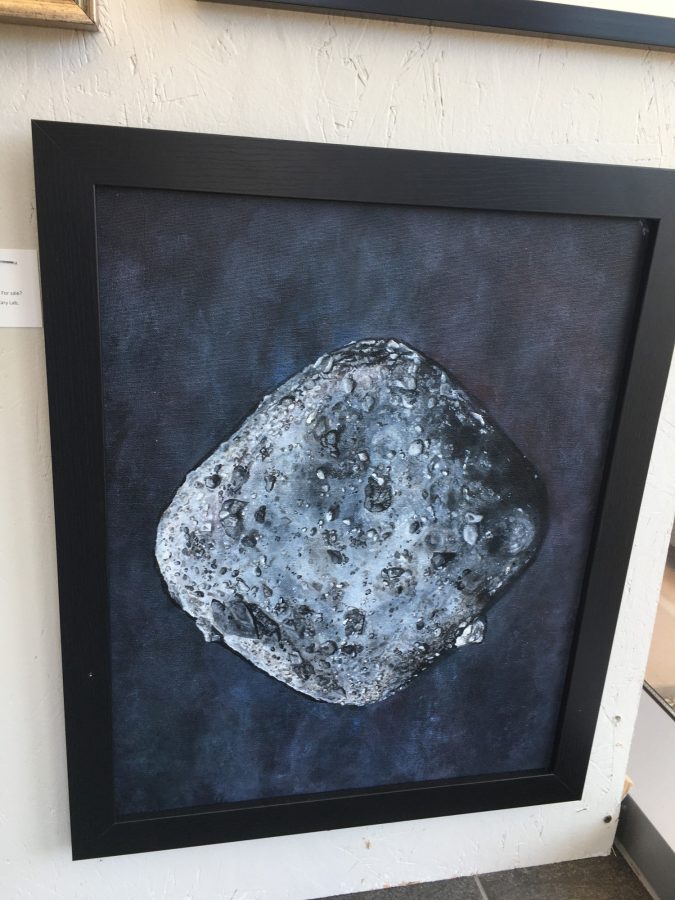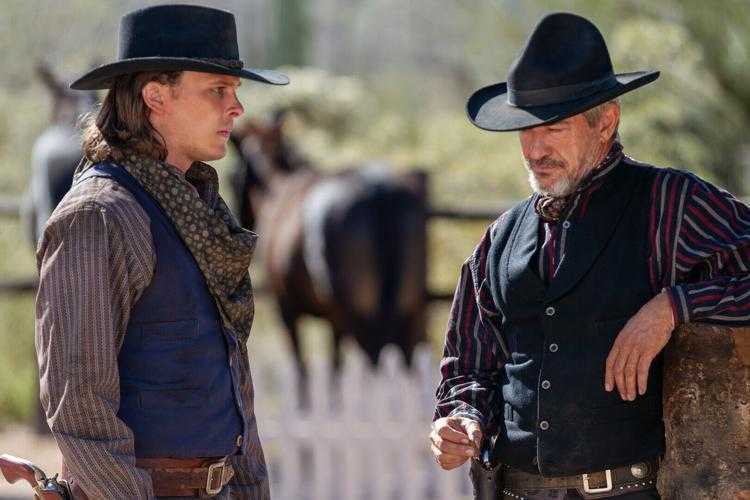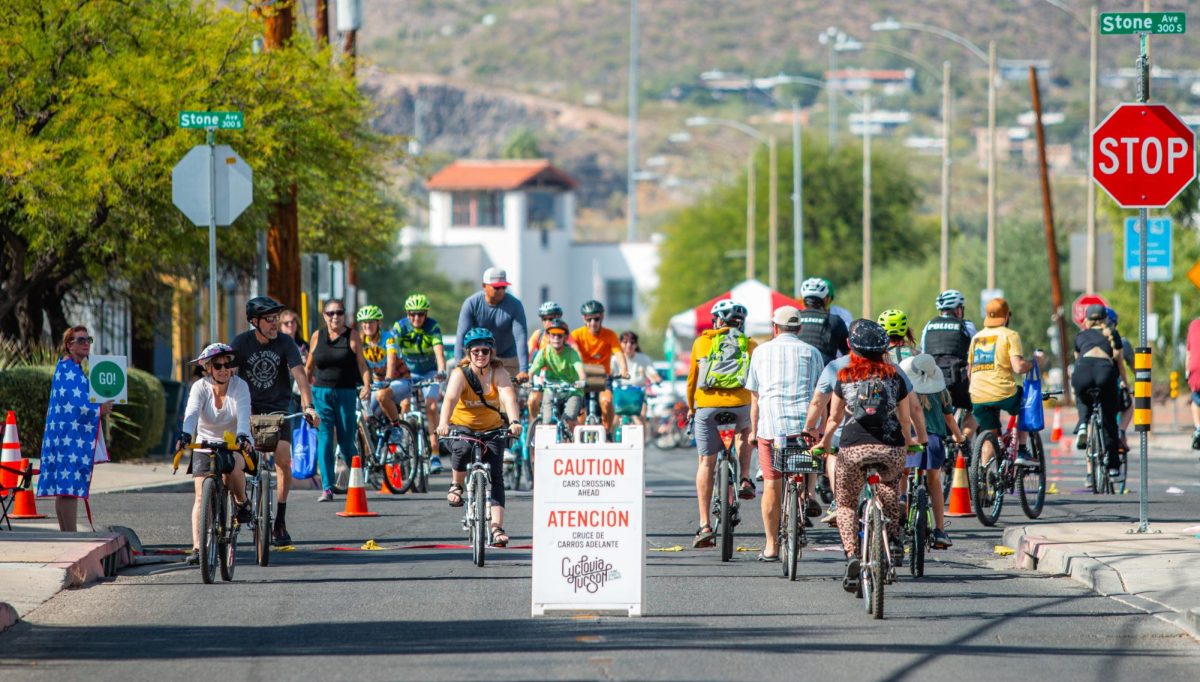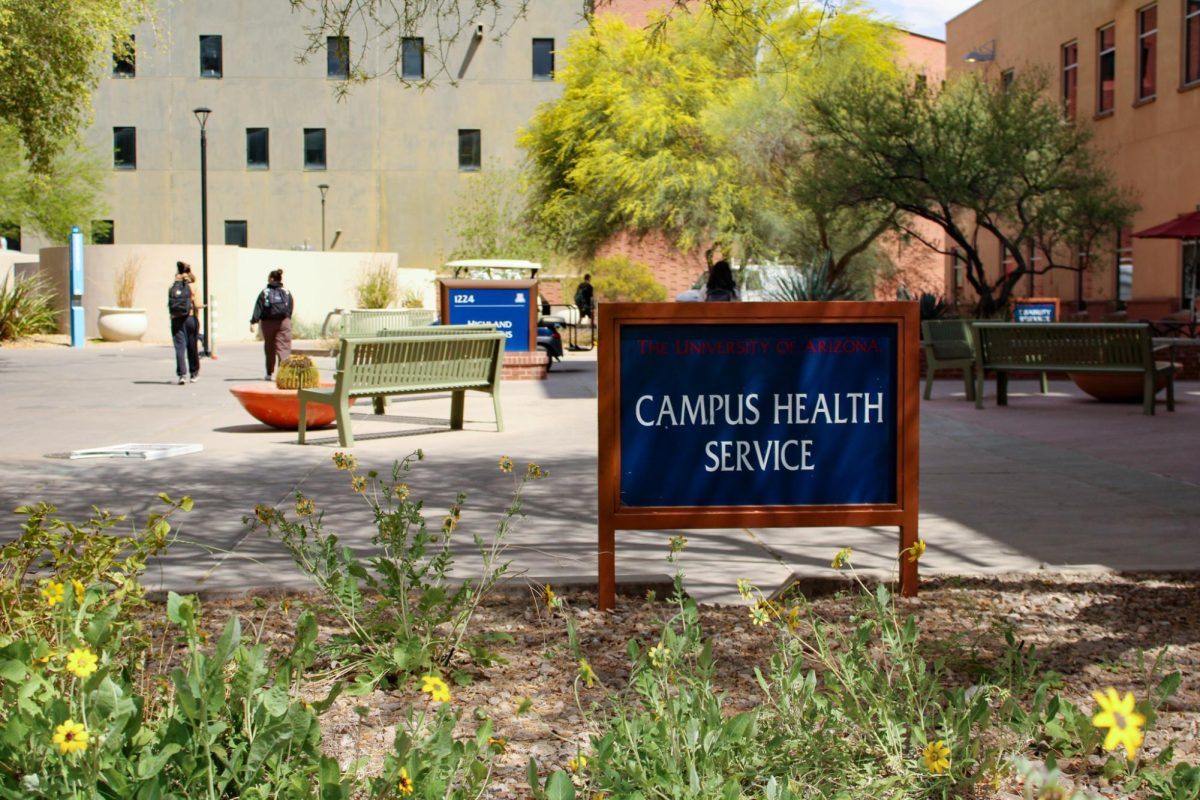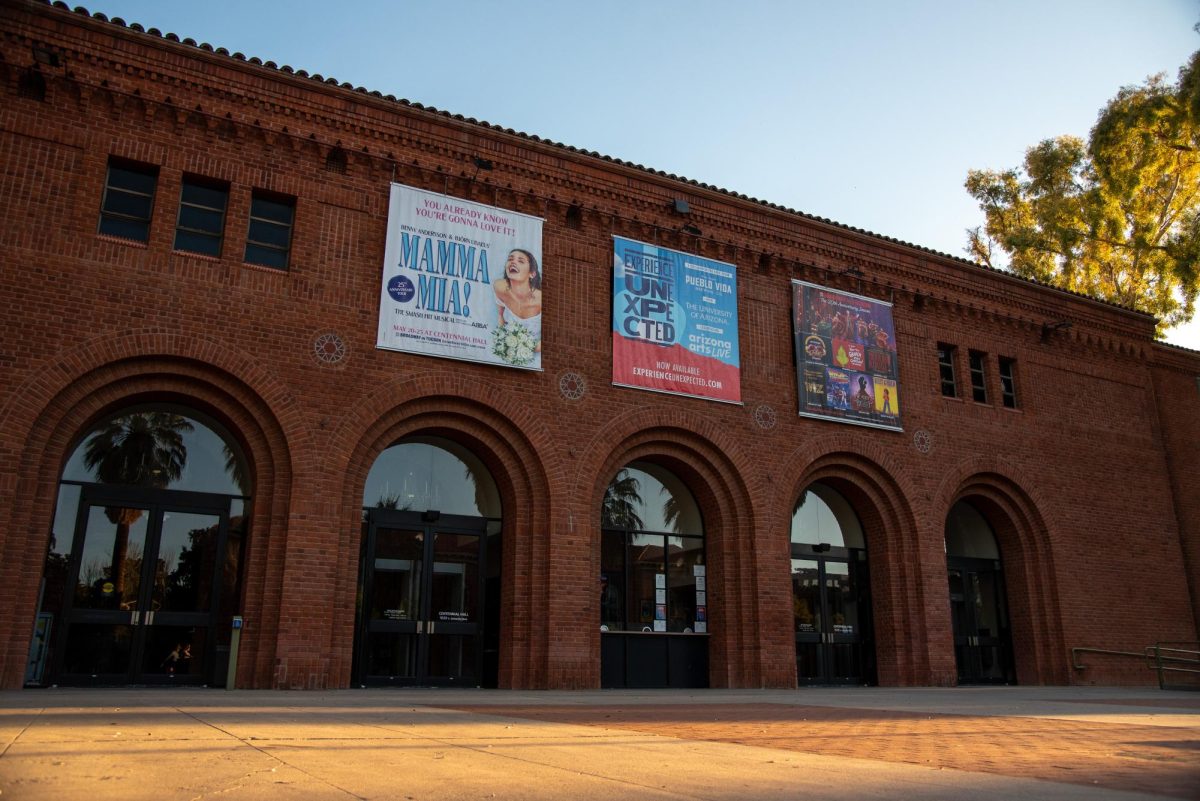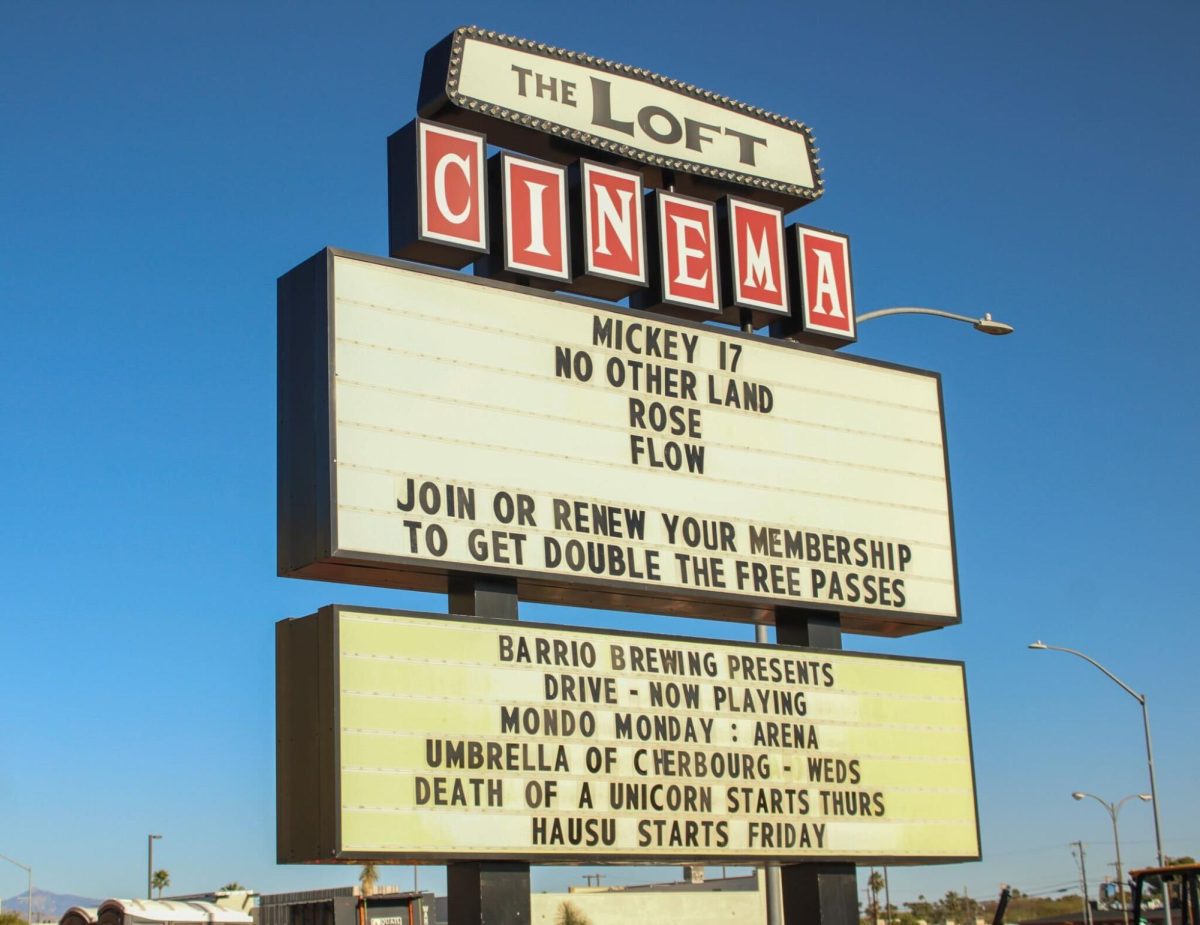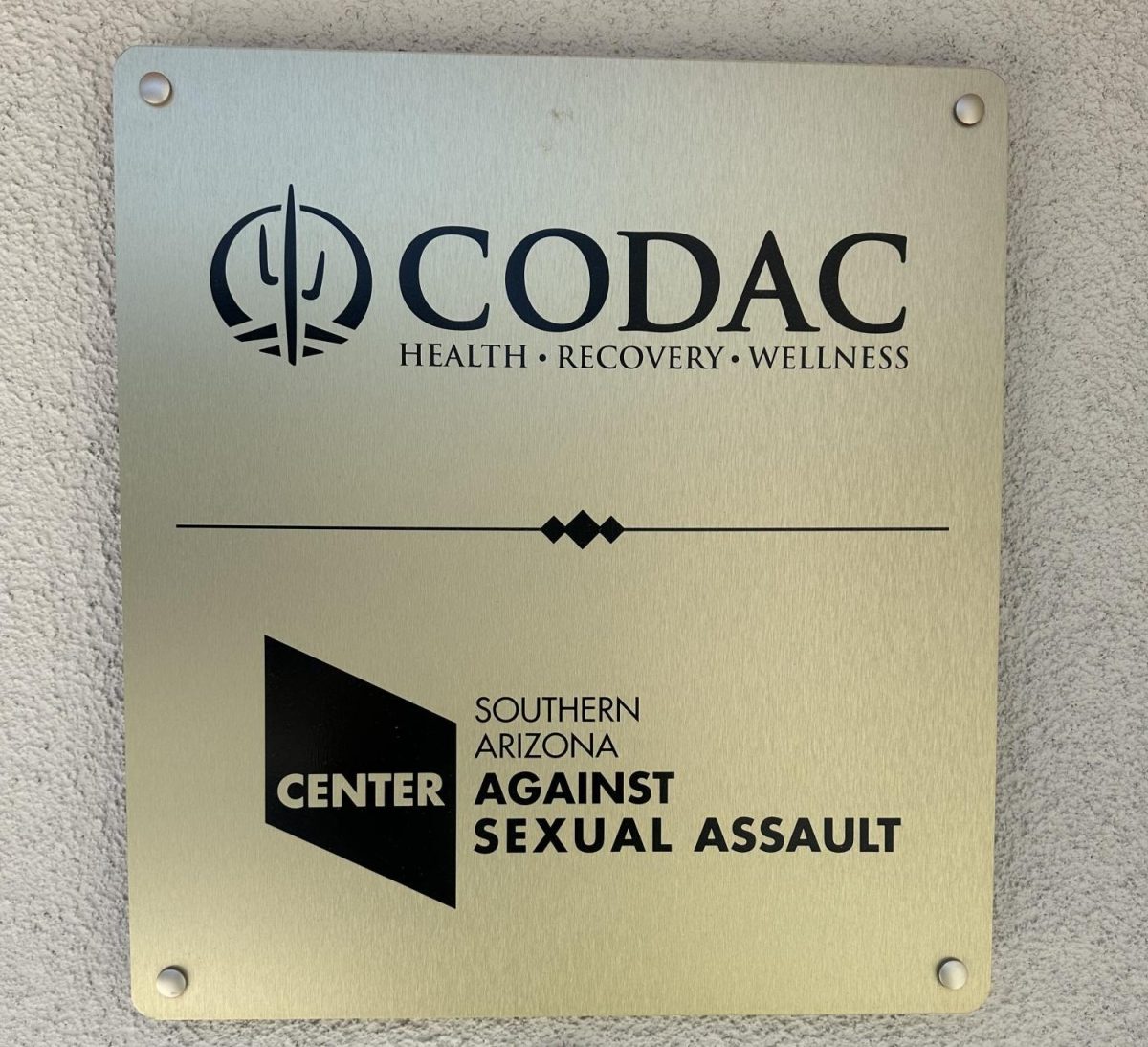Artists from vastly different backgrounds showcased their unique and individual visions of the art for the finale of the 10th annual “On Our Own Time” art exhibit, which ran Feb. 3- 15. University of Arizona employees and their immediate families gathered at Biosciences Research Lab lobby to celebrate the last night of the exhibit.
The show, which is funded by the National Arts Program, offered the participants the opportunity to compete for cash prizes and other awards. Artists were judged and awarded prizes based on their artist categories such as amateur, intermediate, professional, youth or teen.
Pamela Wagner, Tucson show coordinator and center support for RISE Health & Wellness Center, saw importance in giving employees an outlet for their creativity.
“When you’re at work and you have a co-worker you may sit further away from, you may never know that they like the same things you do,” Wagner said. “This gives people a common ground to start with. That brings the community closer together and helps break down barriers and stigmas and just gives people the opportunity to talk about their lives.”
Pieces in the show varied from female nudes missing their nipples from surgery to a self-portrait with a saguaro drawn by an artist under 12 years old.
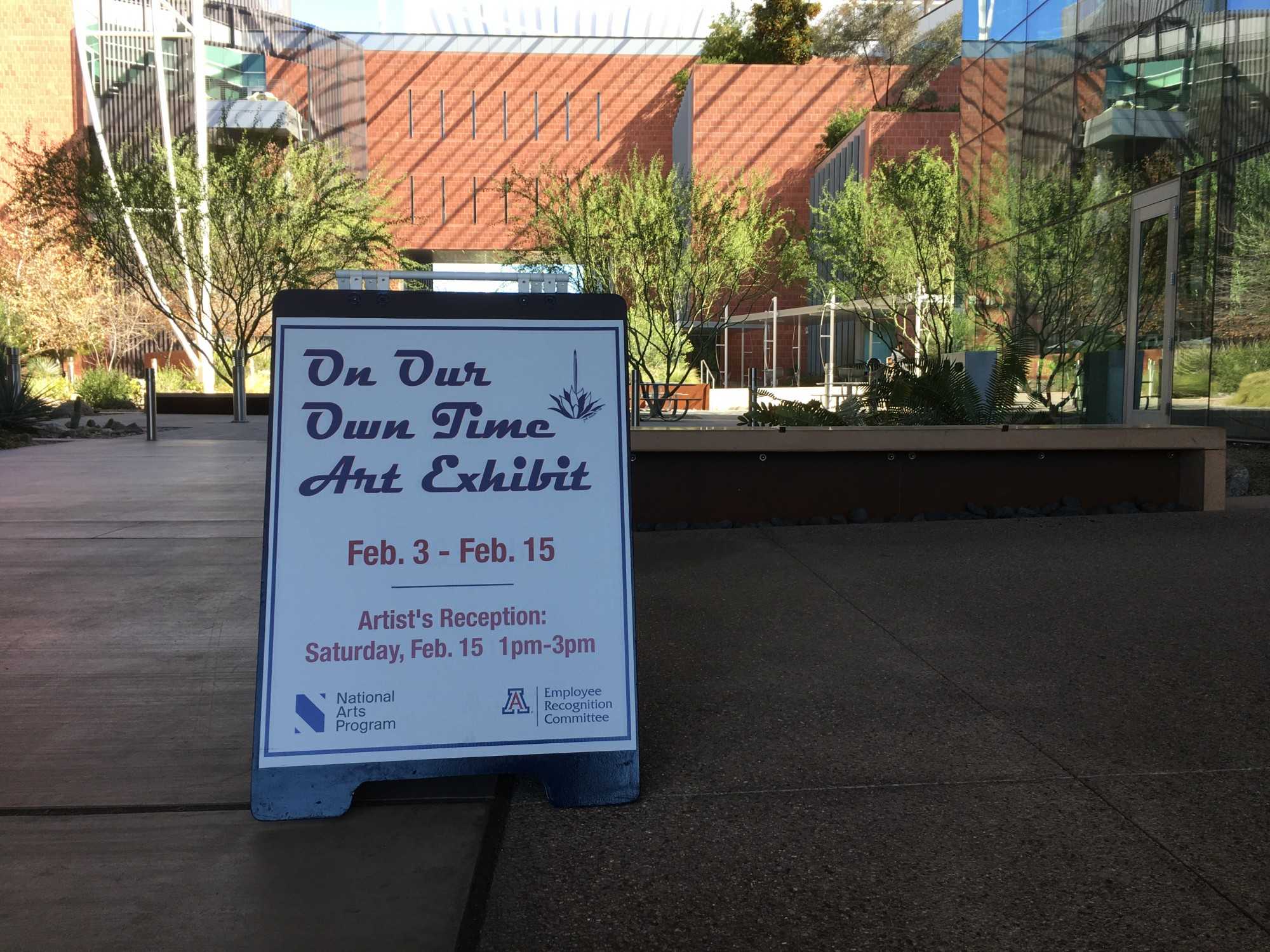
Wagner, who participated in the exhibit for seven years before becoming a show coordinator three years ago, did not want to put limitations on the artists.
“There’s a couple of very strong entries that some people may think, ‘That’s not art. I don’t want to see that. That doesn’t make me happy,’” Wagner said. “But it invokes emotion and in a couple of the instances, it’s an immediate, powerful emotion. That’s how things change in the world. People get together and say, ‘Hey that’s not right.’ A lot of times art is part of that culture change. To see those bits and pieces in exhibits like this that you would think would be kind of insulated — it’s really fascinating to me to watch people’s reactions and then have them think about it.”
Zoe Zeszut, an artist who is also an employee at UA’s Lunar & Planetary Lab for the OSIRIS-REx mission, used art as an opportunity to explore the beauty of space outside of her job.
“[Science is] what I do at work, like that asteroid picture down there. That’s based on an image that our spacecraft took as it approached the asteroid,” Zeszut said. “I was looking at those images for work and I decided to make a nice painting.”
RELATED: Bringing Edward Curtis’ legendary photographs back to life
Cynthia Standley, a professor of bioethics and medical humanism and the director of the Art In Medicine program at the UA College of Medicine — Phoenix campus, incorporated art into her job as a teaching tool.
Standley’s Art in Medicine program aimed to give students a well-rounded approach to medical care, similar to the versatile artists’ approach at the “On Our Own Time” art exhibit.
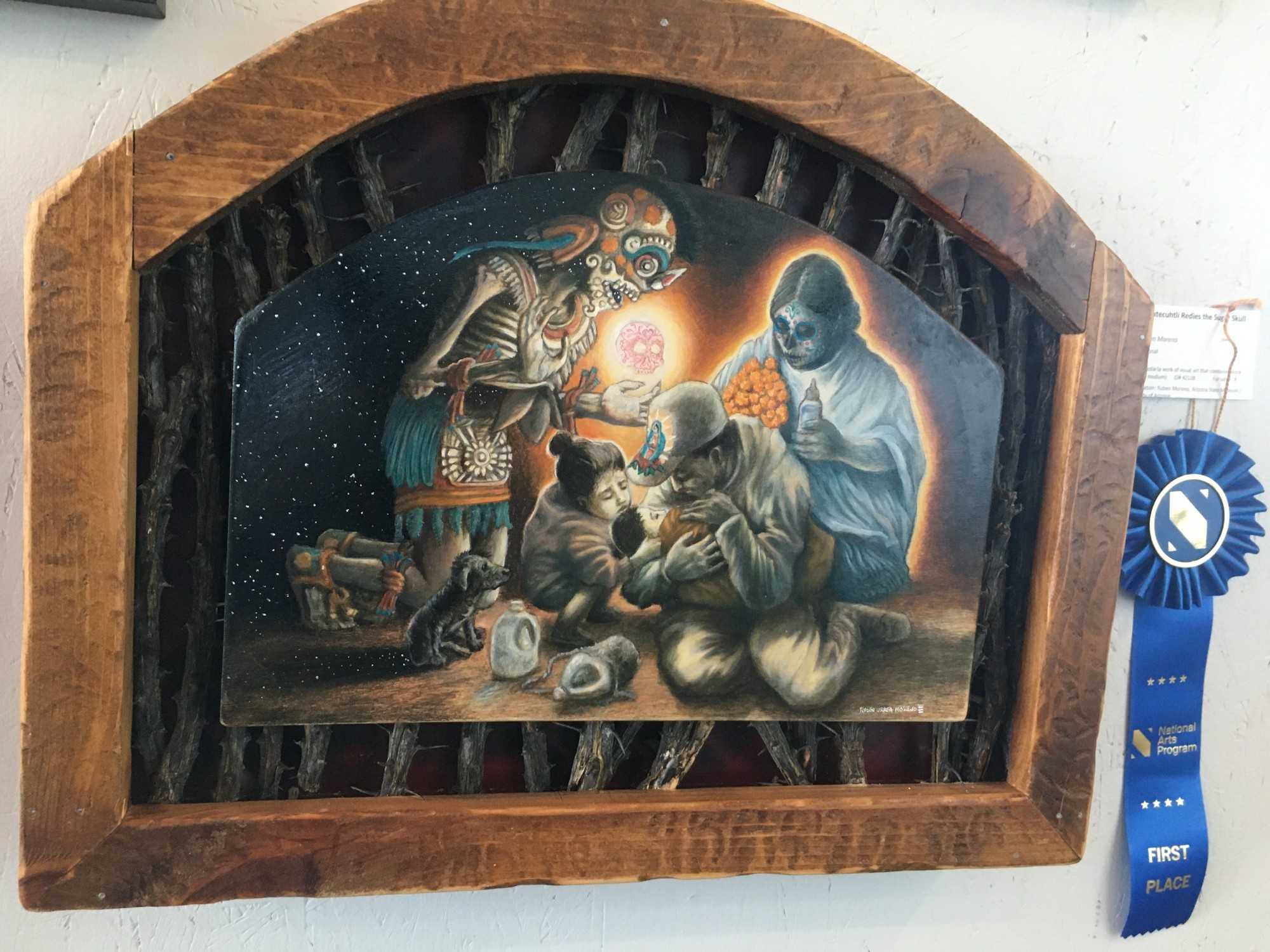
“It’s a program that supports the use of art to build skills in our medical students in empathy, compassion and enhancing patient care,” Standley said.
Standley pointed out the similar goals of the two programs.
“I think this is really great because it shows that there’s a lot more to us than just our daily jobs,” she said. “It’s a way to get to know other aspects of people’s personality, people’s outside interests and things like that. It makes us a little more human that way.”
Follow Ella McCarville on Twitter



